ECW Weekender: Baltimore & Ohio Railroad Museum
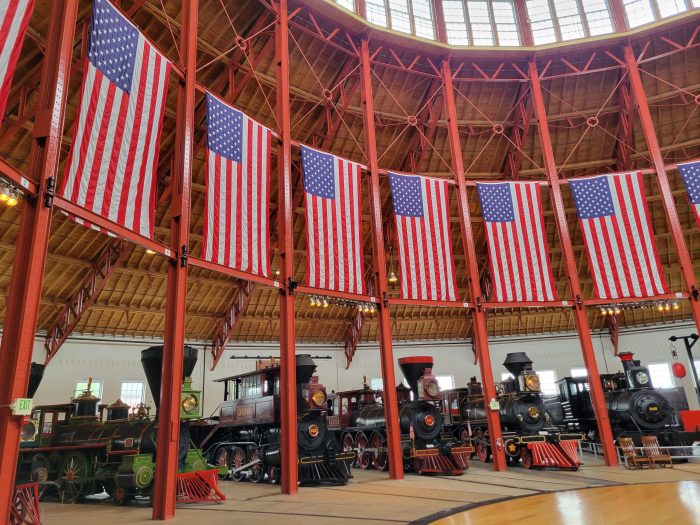
During the Civil War, the Baltimore & Ohio Railroad served as a lifeline for supplies and troops transportation east-west through Maryland, Virginia, and West Virginia. Confederates frequently targeted the tracks, making it one of the most destroyed-rebuilt railroad lines. The history of the B&O stretches to both timeline sides of the Civil War and in some ways is a micro-history of American transportation efforts and successes.
In the Early Republic era interest increased in improving transportation as a means of semi-connecting states and regions and making it easier to ship agriculture or manufactory to the large cities. Turnpikes and canals had their big eras in the early 19th Century. However, a new technology offered a revolutionary opportunity for travel: the steam engine. Mounted into at-first rickety locomotives and pulling treacherous looking “carriages,” trains fascinated and sometimes terrified Americans. The Baltimore & Ohio Railroad’s first section of track opened in 1830. Two years prior – on July 4, 1828 – Charles Carroll, signer of the Declaration of Independence, had laid the first cornerstone. Importantly, the B&O connected Baltimore and Washington D.C. and later paralleled telegraph lines along its track route. Over the next years, the rails and cross-ties moved west from Baltimore, reaching toward the Ohio River. (The railroad did not actually go to the state of Ohio during the antebellum or Civil War years.)
Pushing through the Appalachian Mountains, the tracks reached the Potomac River at Harpers Ferry in 1837, crossing that water by bridge. The railroad briefly journeyed in Virginia and then crossed the river again, connecting to Cumberland, Maryland, and the National Road by 1842. Baltimore connected to the Ohio River by 1852 and then to Wheeling (now West Virginia) the following year. After the Civil War, the rail network expanded, eventually connecting 13 states.
In 1859, once the reports of John Brown’s Raid at Harpers Ferry had been confirmed, the B&O opened their line and make locomotives and train cars available to move Marines and officers from Washington DC to the point of conflict. Two years later, as the Civil War began, the B&O Railroad executive supported the Union, a vitally important fact since they held the single railroad connection into the United States capital. The railroad company owned 236 locomotives, 128 passenger cars, 3,451 freight cars, and 513 miles of track, in the border state of Maryland, northern area of seceded Virginia, and the new state of West Virginia (by 1863). Both Union and Confederate military leaders saw the value of the B&O and spent time, energy, and resources defending or destroying it. The teams of track repairmen would often repair destroyed track in a matter of days by the last half of the war, often making the Confederate raids annoyingly ineffective for decisive blows against the supply line. The importance of the B&O Railroad should not be under estimated, and the numerous raids and changing strategic value of the line make its history a fascinate part of Civil War history.
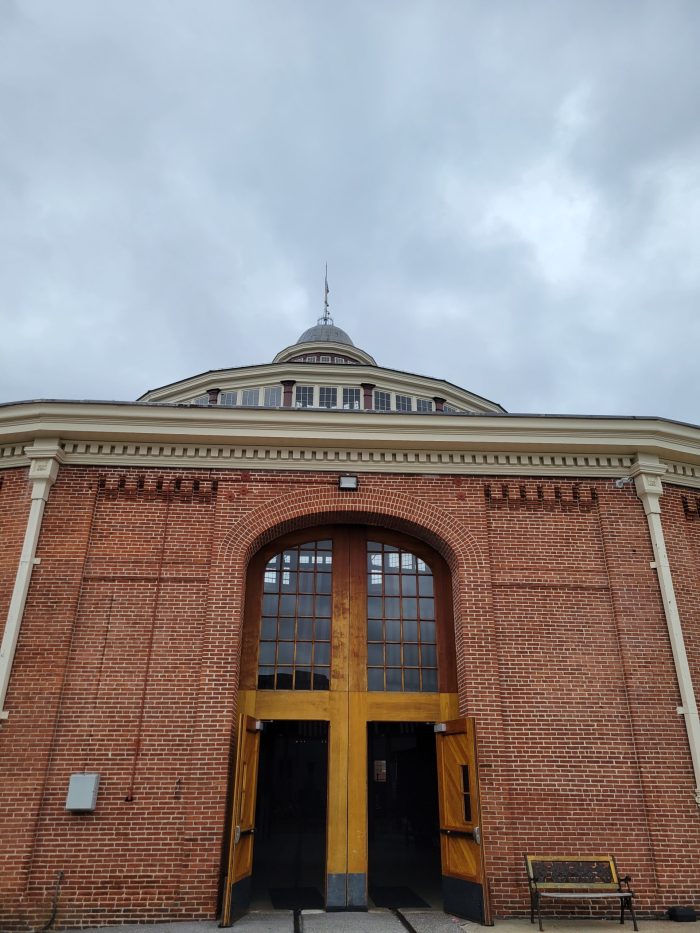
This railroad history – including its Civil War “ties” (literal and figurative) can be explored at the B&O Railroad Museum, located in downtown Baltimore, Maryland. A beautifully restored roundhouse with the original turntable serves as the museum’s focal point and houses the largest collection of Civil War era locomotives in the country!
Displays in the roundhouse explore the railroad’s antebellum and Civil War history. A particularly interesting display shows twisted, destroyed track. Some of the railroad cars date back to the war era, and several of the locomotive have detailed histories. One on display was captured by Confederate General J.E.B. Stuart and survived an attempted burning.
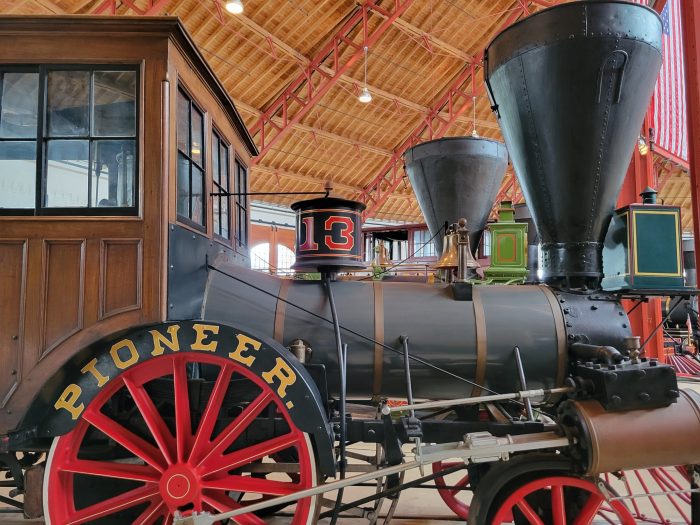
Leaving the roundhouse, the journey continues into the 20th Century with more locomotives and cars, model trains, dining cars, and even the opportunity to take a ride along the route that includes the original first mile of track in the United States.
A special exhibit explores the abolitionist sentiments and practices of the B&O Railroad executives and their refusal to use slave labor for the construction of their tracks. Black men were hired to help build the railroad, a significant contrast to many other railroad companies of that era. The exhibit also shares new research about the B&O’s role in the Underground Railroad and identified “safe houses” and literal stations along the tracks. A full-room multimedia presentation tells the story of Henry “Box” Brown who shipped himself in a packing crate from slavery to freedom with part of his journey moving along the B&O.
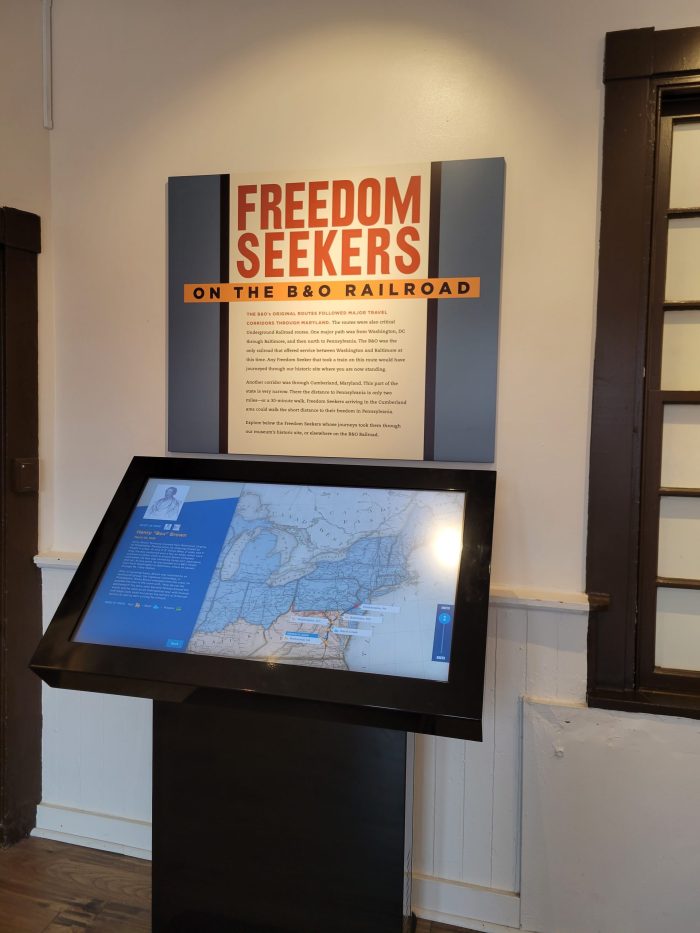
The B&O Railroad Museum offers specific programming about its Civil War history for an additional fee, including guided tours of the museum with an 1860’s military emphasis. If you’re interested in exploring railroad history and details of the B&O’s role in the Civil War, this museum has the collection you won’t want to miss!
The B&O Railroad Museum – 901 West Pratt St., Baltimore, MD 21223

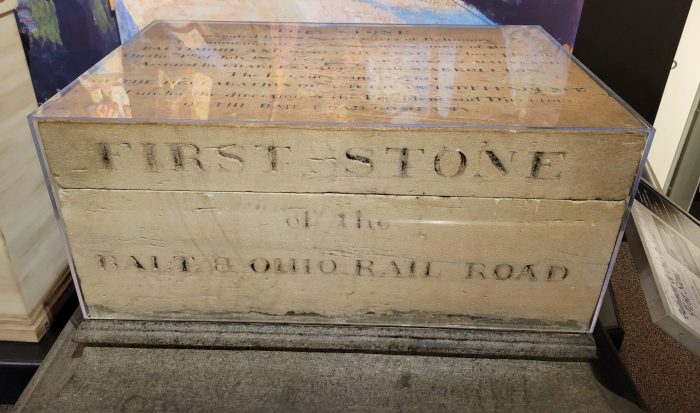
I visited this museum earlier this month. Have been there several times. You can take a ride on a 1940s era train along the original route that was laid in the 1830s. Along the way, the train makes a brief stop to a horse stable owned by the Baltimore City police and you can pet the horses! This is a fabulous museum! So much history here! Thanks for writing about it.
Yay! So glad you had an enjoyable visit and took the train ride.
Great museum but I am afraid to go into Baltimore. Why look for trouble.
Great article, Sarah. This museum has the finest collection of Civil War era locomotives in the country. We take out-of-town visitors there (and Fort McHenry, of course!). Our visitors are always amazed and say, “We have never seen anything like this before.” Very children friendly as well; I have taken my grandchildren there. Quite safe to visit despite some noise to the contrary. Don’t be dissuaded to visit by those who are the victims of their own fears.